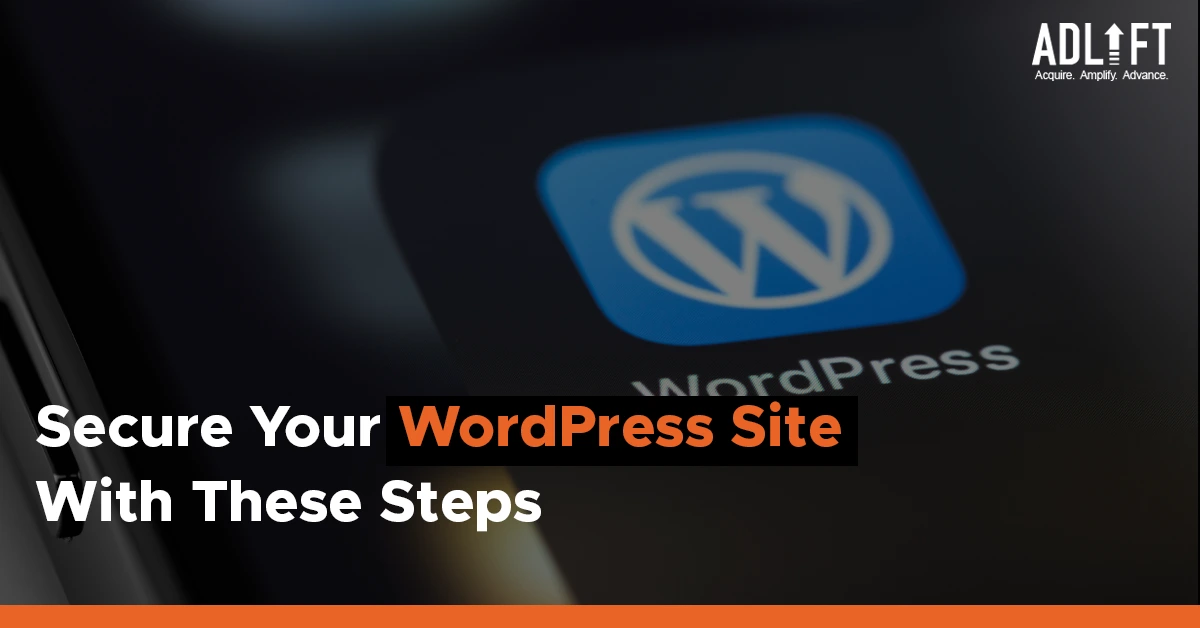Step-by-Step: Securing Your WordPress Site Like a Pro

Understanding how to secure WordPress site is essential to protect it from potential threats and ensure the safety of your users’ data. By implementing robust security measures, you can establish your site as a trusted and reliable online presence. This article will guide you understand how to secure WordPress site so that you understand how to secure a WordPress site like a pro.
Keep Your WordPress Core, Themes, and Plugins Updated
Regularly updating your WordPress core, themes, and plugins is crucial for maintaining WordPress website security. Updates often include security patches that address vulnerabilities and strengthen your site’s defenses against potential attacks.
To keep your site up to date:
- Enable automatic updates for your WordPress core, themes, and plugins whenever possible.
- Regularly check for updates and manually update any components that require your attention.
By keeping your WordPress installation and associated components updated, you ensure your wordpress website security against known security risks.
Use Strong and Unique Passwords
Using strong and unique passwords is one of the simplest yet most effective ways to enhance your WordPress website security. Weak passwords make it easier for malicious actors to gain unauthorized access to your site.
Follow these best practices for password security:
- Use a combination of uppercase and lowercase letters, numbers, and special characters.
- Avoid using common or easily guessable passwords.
- Use a password manager to securely store and generate strong passwords for your site.
By using strong and unique passwords, you significantly reduce the risk of unauthorized access to your WordPress site.
Limit Login Attempts
Limiting the number of login attempts helps protect your site from brute force attacks, where automated bots try various combinations to guess login credentials.
To limit login attempts:
- Utilize security plugins that offer login attempt limitation functionality.
- Implement custom code in your WordPress theme’s functions.php file to restrict the number of failed login attempts.
By limiting login attempts, you decrease the likelihood of successful brute-force attacks on your WordPress site.
Implement Two-Factor Authentication
Implementing Two-Factor Authentication (2FA) adds an extra layer of security to the login process of your WordPress site. It requires users to provide an additional authentication factor, such as a unique code generated on a mobile device, in addition to their password.
To implement 2FA:
- Install a reputable 2FA plugin from the WordPress Plugin Directory.
- Configure the plugin to enable 2FA for specific user roles or users.
By implementing 2FA, you significantly enhance the security of user logins and protect your WordPress site from unauthorized access.
Backup Your Site Regularly
Regularly backing up your WordPress site is essential to ensure that you can restore your site in the event of a security breach, data loss, or any unforeseen circumstances.
Follow these backup best practices:
- Choose a reliable backup solution or plugin that suits your needs.
- Create automated backup schedules to ensure regular and consistent backups.
- Store backups in secure, off-site locations, such as cloud storage or external servers.
By regularly backing up your site, you minimize the impact of potential security incidents and have the means to restore your site to a previous state if necessary.
Protect Your Site with a Web Application Firewall (WAF)
Implementing a Web Application Firewall (WAF) adds an extra layer of protection between your site and the internet, filtering out malicious traffic and blocking potential threats.
Key benefits of using a WAF include:
- Protection against common web application attacks like SQL injection, cross-site scripting (XSS), and DDoS attacks.
- Traffic filtering to identify and block suspicious or malicious traffic.
- Virtual patching to mitigate the risk of exploiting known vulnerabilities.
Integrating a WAF into your WordPress site can significantly enhance your site’s security and protect it from various types of attacks.
Secure Your WordPress Admin Area
Securing your WordPress admin area is crucial as it is the primary target for hackers attempting to gain unauthorized access to your site.
Take the following measures to secure your admin area:
- Use a unique and hard-to-guess login URL instead of the default “/wp-admin” or “/wp-login.php”.
- Limit access to the admin area by restricting IP addresses or using IP whitelisting.
- Implement HTTP security headers, such as Content Security Policy (CSP) and X-Frame-Options, to protect against malicious activities.
By securing your WordPress admin area, you reduce the risk of unauthorized access and fortify your site’s overall security.
Secure Your Hosting Environment
Your hosting environment plays a crucial role in the security of your WordPress site. Choose a reputable hosting provider that prioritizes security and implements robust measures to protect your site.
Consider the following hosting security aspects:
- Opt for hosting providers that offer SSL certificates for encrypted communication.
- Ensure your hosting provider performs regular backups and has a disaster recovery plan in place.
- Select hosting plans that include features like server-level firewalls, intrusion detection systems, and malware scanning.
By selecting a secure hosting environment, you create a solid foundation for your WordPress site’s security.
Conclusion
Understanding how to secure WordPress site is of utmost importance to protect your data, users, and online reputation. By following the step-by-step guidelines outlined in this article, you can enhance your site’s security and minimize the risk of security breaches and unauthorized access.
Remember to keep your WordPress core, themes, and plugins updated, use strong and unique passwords, limit login attempts, implement Two-Factor Authentication (2FA), regularly backup your site, and leverage security measures such as Web Application Firewalls (WAFs) and secure hosting environments. By prioritizing security and implementing comprehensive security measures, you can create a safe and trustworthy online presence for your WordPress site.

